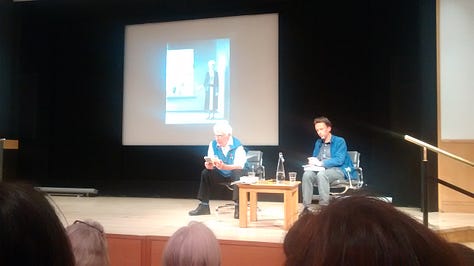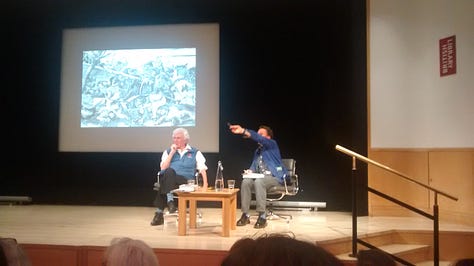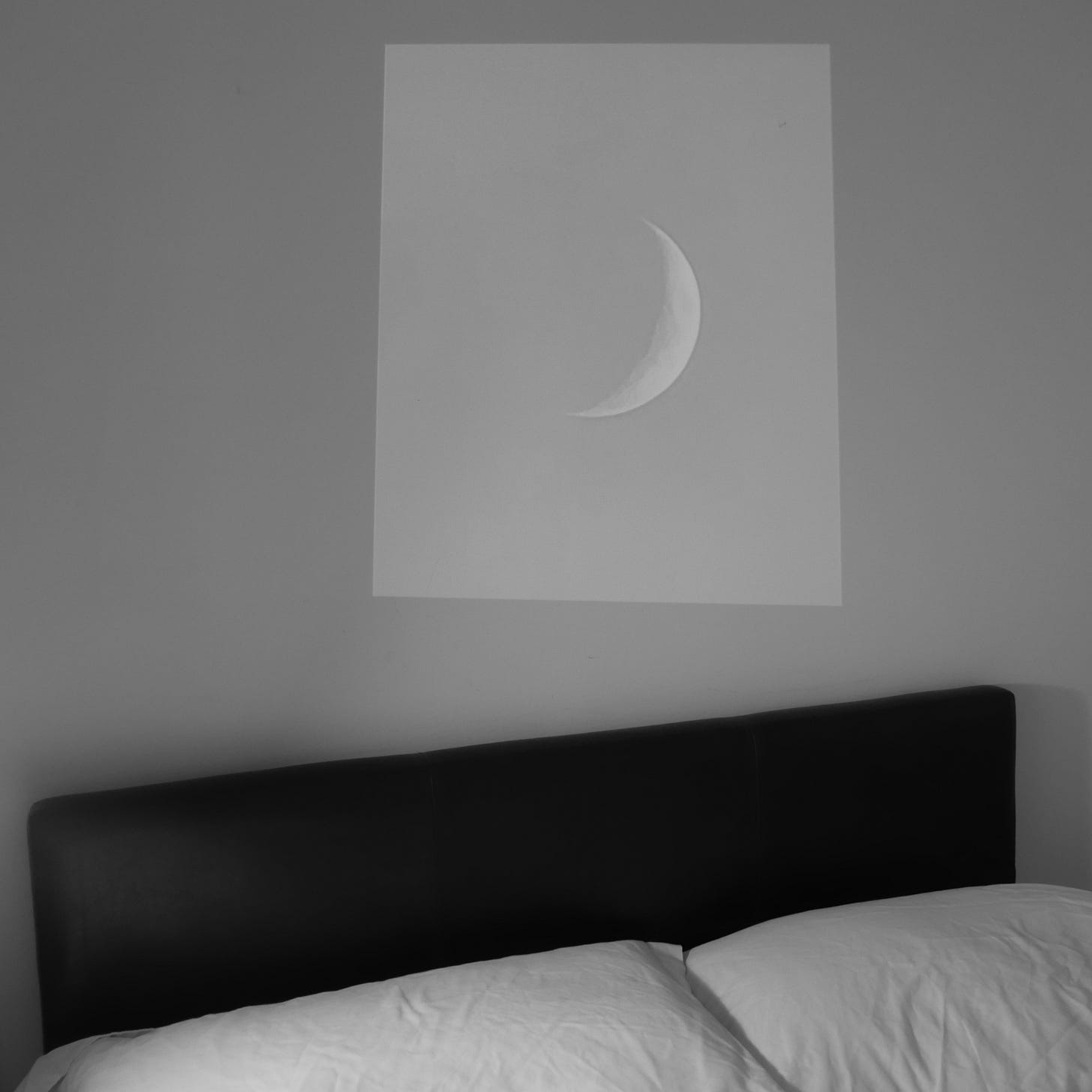The personal is political.
Sara Ahmed (2017, p.10)1
It’s that time of year again where I’d rather just disappear and let you all get on with it. Imprinted upon me, indelibly, the hell of Meadowhall, recycling escalators and circling three floors, only to end up back at House of Fraser, again, eternally chained to some Muzak membrane and don’t get me going on Christmas tunes. As much as I admire and respect the late Shane Macgowan (RIP) for his talent, I admit my first thought on hearing of his passing, was ‘oh no, it’s bound to be Christmas number one.
This year, I find myself alone for Christmas. Waitrose had quality silver taper candles down to £1.25 a pack so I bought four to see me into the New Year.
I expect soft lighting, wind raging up through the plug hole in the shower at ungodly hours and being cocooned under the quilt, bar NYE, for which I’ve been asked along to In Dusk We Trust in the Acid Arch which will be blacked out with lasers, lights, smoke and a full on sound system to boot. Maybe I’ll even get tasered. As women, we’re pretty lucky that our orgasms are never quite the same. They linger, ripple, go into hiding, deliciously undo, tease us with the prospect of a second (or third) coming or madly thwart us, depending upon our mood, hormones, day job, perseverance, or psychosexual stimulus, etc. When I told an ex I wanted him to treat me like meat, I meant it.
I recently met an Jungian astrologer in a coffee shop who suggested I get my chart done. It transpired that this woman is neither interested in star signs or daily columns but more Pluto moving into Aquarius during the pandemic when everything went online. We got on to talking about the exponential pace of AI which she explained was due to this planetary alliance being acted out. I’ve always been fascinated by space, all that mysterious dark energy expanding the universe as we speak, planets spinning at insane speeds on their axes, amidst defunct and hurtling human-made debris - Space Junk - posing a problem, proliferating and going on in divine silence, bar the grunt of gravitational waves.
It occurs to me that there must be a plethora of social media accounts still in existence that belong to the dead which nobody has deactivated. Passwords aren’t necessarily saved and the dead can’t exactly pop back to do touch screen ID so that a kindly relative could then access their devices and delete their profiles. Plus, with more people living alone, (the figure is approaching 50% in Sweden) more are obviously dying alone. These stories of some random council worker popping in on a tenant in arrears and finding them dead on the couch with the TV still on in the background are so horrific precisely because they are true.
I rarely if ever use Soundcloud these days since it got infiltrated by bots and spam promoters but I used to back in the days when I started recording spontaneous songs with my old Aria acoustic as voice notes after work or in my lunchbreak.
During this time my Dad followed me on Soundcloud. He had no followers himself, except for me and it occurred to me the other day that one day, I might log on, and his avatar will still be there after he’s long gone. It’s not easy to die online.
This put me in mind of a poignant passage written by the American author, Jonathan Franzen, describing how, on his mother’s passing, he went around to sort out her belongings and opened the fridge to find half a tin of garden peas gingerly wrapped in cling film. It nearly broke him. It is just the type of thing that would break me too, these habits and routines that make up a person.
My Dad sends me a photo on WhatApp from NASA’s footage of the James Webb telescope.
In his epistolary chapter “Some Notes About Song (for Yasmine Hamdan)” in Confabulations (2016)2 , his slim book of essays on post-truth published by Verso a year before he died, John Berger addresses the Lebanese singer, re-capturing, in his trademark, sensual prose the one time experience of sketching her whilst watching her sing: “with your right hand you’re holding the mic as if you might be swept away by a current.” (p.120).
This is something painters really do - they pay attention - an erotic act.



Berger (who rarely wrote on song, which makes it all the more special) describes Hamdan’s relationship with the microphone, as if she is holding onto it to steady herself. He describes her posture in detail, and the more I perform and watch others perform, the more I’ve become aware of our relationship with the microphone, rooted, as it is to the stand, or not. I often end up tangled up in wires, with the microphone hanging around my neck, engaging with the hardware in unwarranted ways. It’s about more than ‘good’ or ‘bad’ microphone technique though; it’s about our relationship to loss.
Here, in this brief chapter, Berger perfectly encapsulates the way that, as singers, we pour ourselves into the microphone, encased in wire gauze and meshing as if it were a container we might spill out of, which it is. And isn’t this how so many singers hold on to their mics on stage, even when they’re fixed on a stand? Our relationship with the mic is never not erotic.
During my improv nights at The Glad Cafe, Glasgow, with members of GIOdynamics, on the last Wednesday of every month, I’ve taken to wrapping the mick loosely around my neck and shoulders, de-rooting myself. A mobile performer on stage, this enables me to get in amidst the gear and electronics, and up close to the other performers, if needed. These five minute sets, which we each do two of, can get chaotic but there’s always a kind of internal coherence because we’re all listening, as much as playing. At times, especially when in line with the noise guitar, it can like a sexual dialectic. He strikes a chord, I respond, and vice-versa, and there’s no time to think, bliss.
The black lesbian poet and activist, Audrey Lorde, theorised the erotic as “a resource within each of us that lies in a deeply female and spiritual plane, firmly rooted in the power of our unexpressed or unrecognised feeling” (1984, p.53)3.
Such excess was also on display with the overlooked American black jazz vocalist, improviser, dancer, and teacher, Jeanne Lee, most well known for her album Conspiracy (2021[1974])4. Hers was an embodied, if not, feral, sound which tested the boundaries of vocal performance art led by her sense of the world as a dancer. Lee’s contributions went unaccounted for some time, in the literature, due, in no part, to her marginalised status as a mother and black woman who just happened to make forays into experimental, and often elitist, avant-garde improvisation circles. She was also a scholar.
I found Conspiracy (1974) at the same time I was listening to Alice Coltrane’s Eternity (1975)5. Such “right-brained activity” (McGilchrist, 2019, 2021)6 of the type called upon in improvisation, for example, is expansive, and cosmic, resisting the ‘grasp’ of the left-brained hemisphere.
Dr Iain McGilchrist’s divided-brain hypothesis is of much relevance to improvisers. The simplest way to describe his hypothesis is left-brained = either/or, right-brained = and/both. The left-brained hemisphere is engineered for the rigidity of thought of the type which he critiques pervades our systems and institutions. Intuition - being right-brained - is not an ‘airy-fairy’ faculty but rather an immeasurable reserve. Empirical studies have consistently proven intuition to be not only a quicker decision maker, but a more accurate one. In brief, the more time we procrastinate upon a decision, the less optimal that response is. It makes sense that the right-brain is active when performing/recording spontaneous song and this is backed-up by studies on improvisers as opposed to musicians playing from sheet music, in terms of which part of their brain ignites on imaging scans.
The artist Brian Eno is interesting as he frequently espouses the role of intuition in his working methods and processes. Of relevance, he terms his methods “in-studio composition”7. Eno (2017) using the analogy of the painter, using an “additive” approach, detailing how he might:
come [to the studio] with actually rather a bare skeleton of the piece, or perhaps with nothing at all. … [putting] the composer in the identical position of the painter … working directly with a material
(pp.185-188)
With a singer, this material, is, of course, the voice, and its mercurial properties, leaving its signature upon the recording, which is already a ghost of itself.
Whereas, in performance, the voice would disappear, and one would leave the stage. In psychoanalysis, such death or disappearance would be countered by its opposition, Eros, from the Greek: ‘the carrier of chaos,’ the principal creative force. Repetition can play a significant part in how we generate and map these patterns. Music, is, ultimately, about rhythm and rhythm is about sex, as is the drum kit, and the pulse. We repeat.
The term “repetition-compulsion” - which is classified as an ego-defence mechanism - was first defined by Freud in his essay: “Remembering, Repeating and Working-Through” (1914, quoted in Phillips, 2016)8 and subsequently expanded upon in seminal essay, “Beyond the Pleasure Principle” (2015). Beyond clinical practice, though, and in relation to my experience, I would suggest that “repetition – compulsion” gets channelled through spontaneous song in which one remembers and works through their life (or even their “unlived life”)9 (Phillips, 2013), projecting their fantasies onto songs and testing desirous boundaries.
NEWS
My new EP - Blackout Baby - is out now. You can listen to it here. Please share this post as it will help others to find it.
Ahmed, S. 2017. Living a feminist life. Durham, NC: Duke University Press.
Berger, J. 2016. Confabulations. London: Verso.
Lorde, A. 1984. The uses of the erotic: The erotic as power. In: Sister Outsider: Essays and Speeches. Trumansburg, New York: Crossing Press, pp.53-59.
Jeanne Lee. 2021. Conspiracy. [Online]. England: Moved-By-Sound. [Accessed 20 September 2022]. Available from: https://moved-by-sound.bandcamp.com/album/conspiracy-2
Alice Coltrane. 1976. Eternity. [CD]. US: Warner Records.
McGilchrist, I. 2019. The master and his emissary: the divided brain and the making of the Western world. [Online]. 2nd ed. New Haven: Yale University Press. [Accessed 4 September 2022]. Available from: https://go.exlibris.link/9TrHq9vw
McGilchrist, I. 2021. The matter with things: our brains, our delusions, and the unmaking of the world. London: Perspectiva Press.
Eno, B. 2017. The studio as compositional tool. In: Cox, C. and Warner, D. eds. Audio culture: readings in modern music. 2nd ed. New York: Bloomsbury, pp.185-188. [Accessed 20 January 2020]. Available from: https://ebookcentral.proquest.com/lib/gla/detail.action?docID=6933968
Phillips, A. 2016. On “remembering, repeating and working through,” again. Contemporary Psychoanalysis. [Online]. 52(3), pp.375-382. [Accessed 3 December 2023]. Available from: doi.org/10.1080/00107530.2016.1174812
Phillips, A. 2013. Missing out. In praise of the unlived life. London: Penguin.




